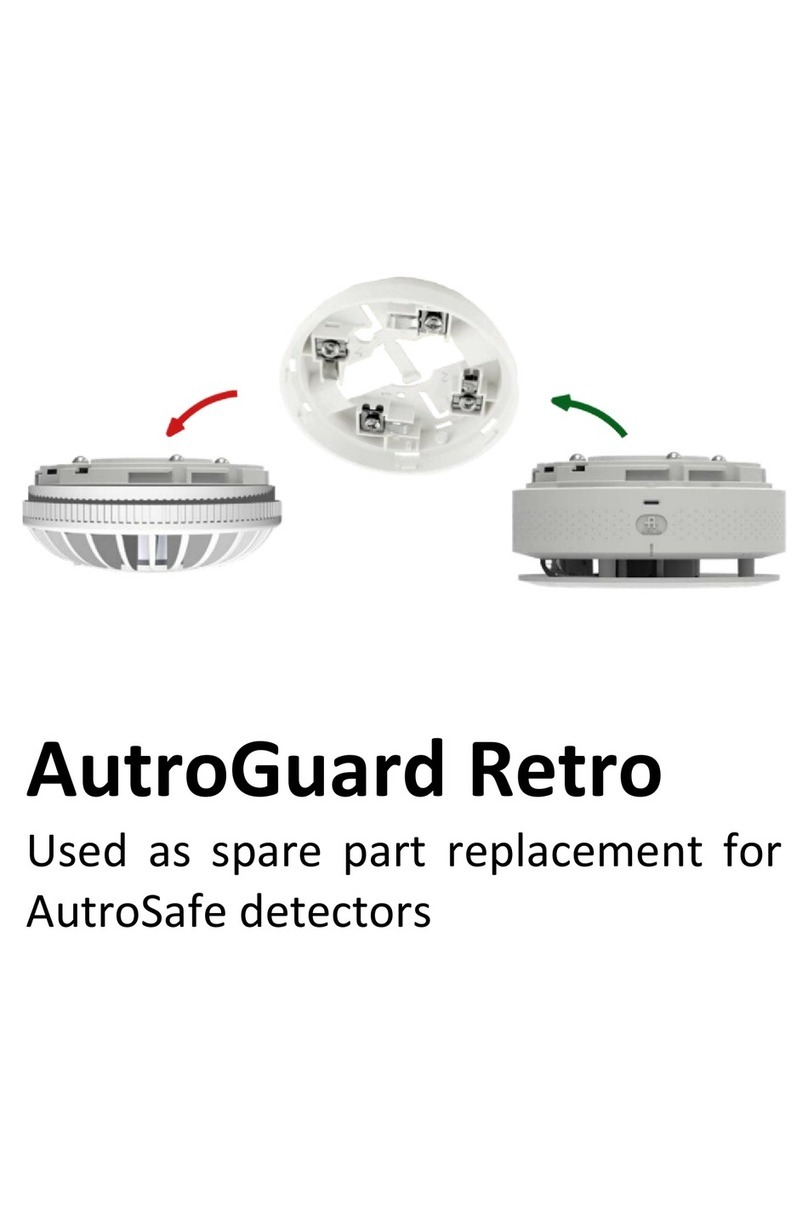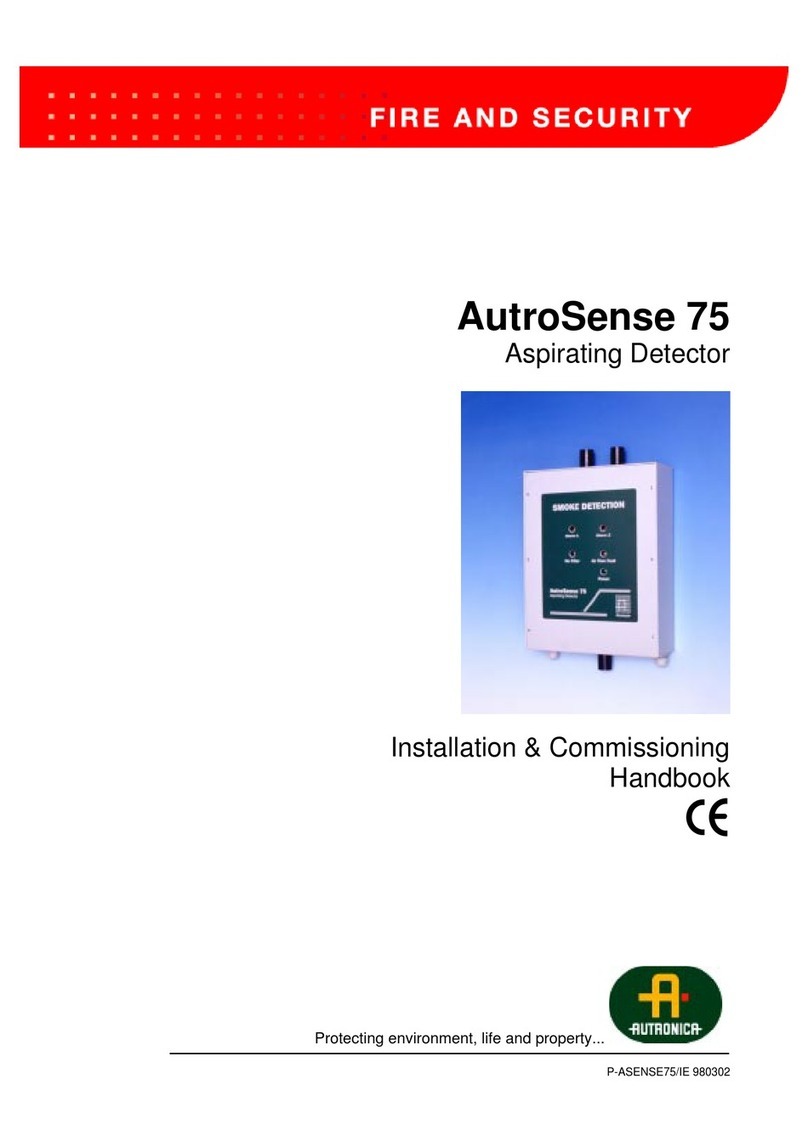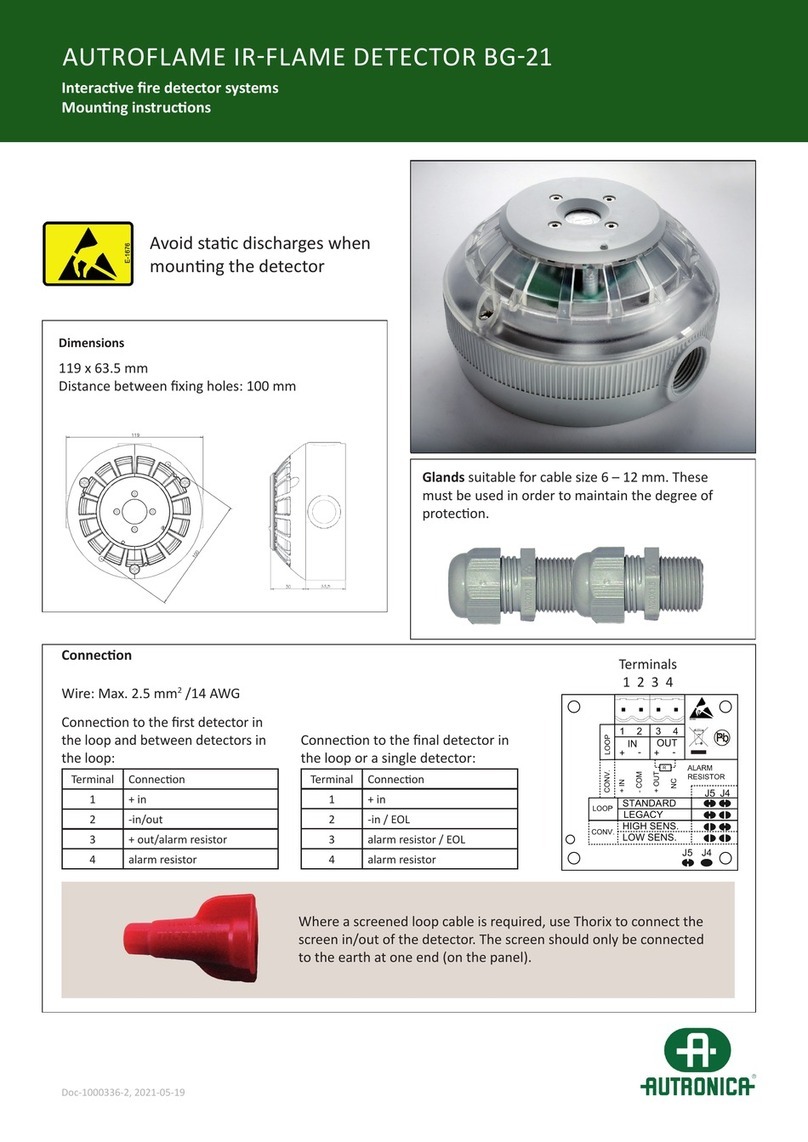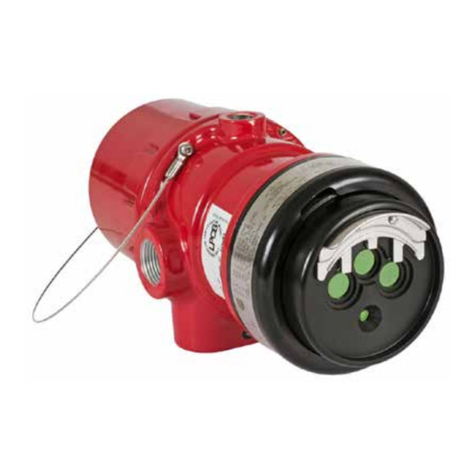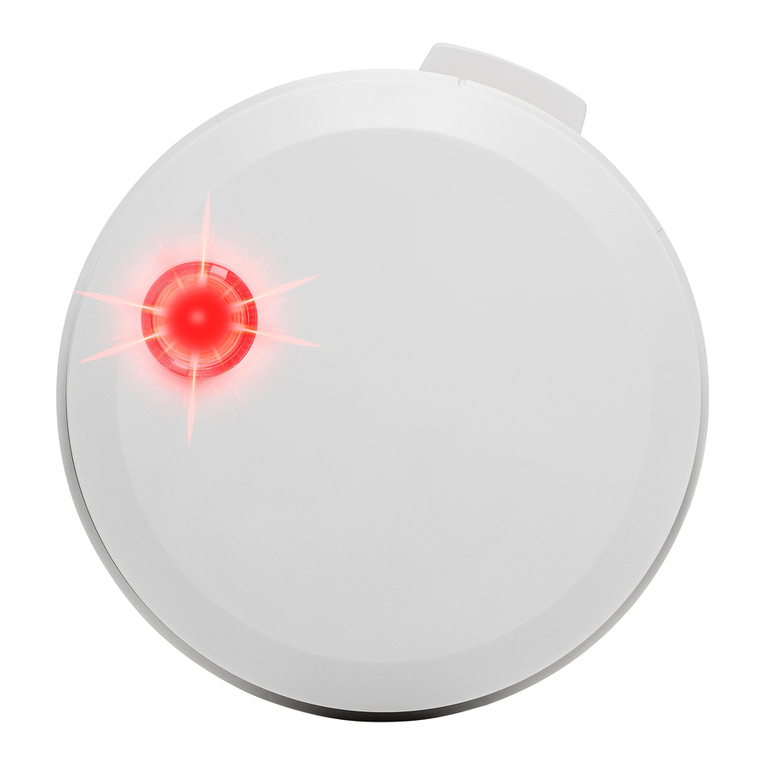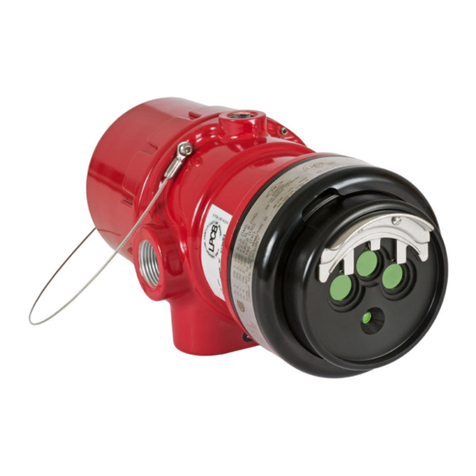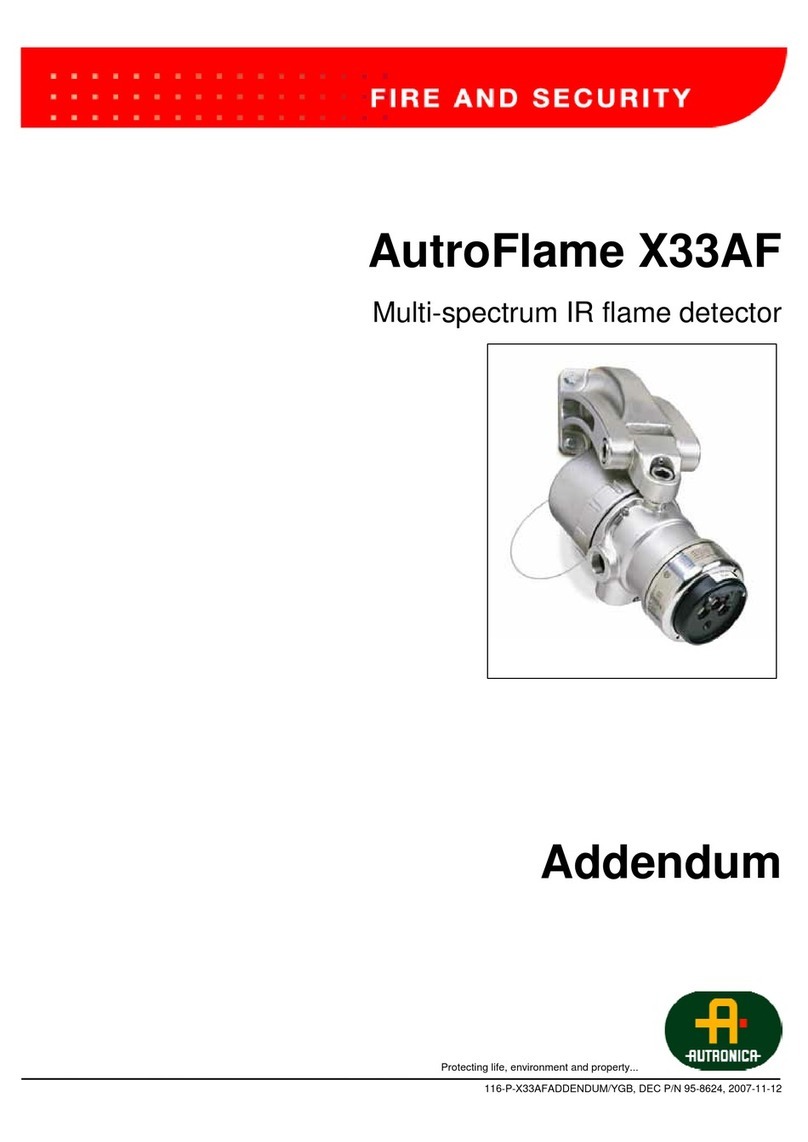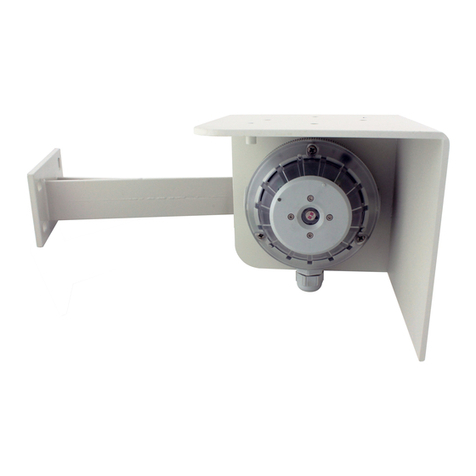
TechnicalDocumentation: FireDetectorsusedinhazardousareas
P-DET/EX/RCE/PM5/GKa/110995 7 Autronica Fire and Security AS
The table below shows the different forms of protection against gas explosion,
in abbreviations and explanations. The latter is presented in the plain languages
most used by Autronica personnel, handling fire alarm problems.
Plain language explanation in:
Abbreviation Norwegian English German
Exd Eksplosjonssikker Flame proof Druckfeste Kapselung
utførelse
Exe Tennsikker utførelse Increased safety Erhöhte sicherheit
Exm Innstøpt utførelse Moulded Vergusskapselung
Exn Utstyr for sone 2 Equipment for
Zone 2.
Exs Spesialutførelse Special construction Sonderschutz
Exi Egensikker utførelse Intrinsically safe Eigensichere
Exia Sone 0, 1 og 2 Zone 0, 1 and 2 Betribsmittel
Exib Sone 1 og 2 Zone 1 and 2
Exp Overtrykkskapsling Pressurized enclosure Überdruckkapselung
Exo Oljefylt Oil immersed Ölkapselung
Exq Sandfylt Sand filled Sandkapselung
Note that all Ex-determinations, except Exi, Exia, and Exib are concerning
apparatuses.
Intrinsic safety.
(Concerns circuits, which may include several apparatuses).
Intrinsically safe equipment has limited supply of electrical energy, so that any
spark created has too low energy to ignite the gas.
Also no part of the equipment surface shall be able to reach a temperature
greater than the igniting temperature of the gas. (Which is, or may be expected
to be present.) In order to be able to perform this energy limitation, energy
barriers are necessary to limit the supply of electrical energy to the hazardous
area. Such energy barriers are built up by means of zener diodes, and therefore
they are given the name Zenerbarriers.
Exi-equipments are arranged in two main groups, Group I and Group II.
The latter, which is the one being concerned in this description is again divided
in three parts, namely: Group IIA, Group IIB, and Group IIC. (Group I is
concerning Mining Industry, mainly).
Equipment may, of course, be used for less hazardous area than what it is built
for.
